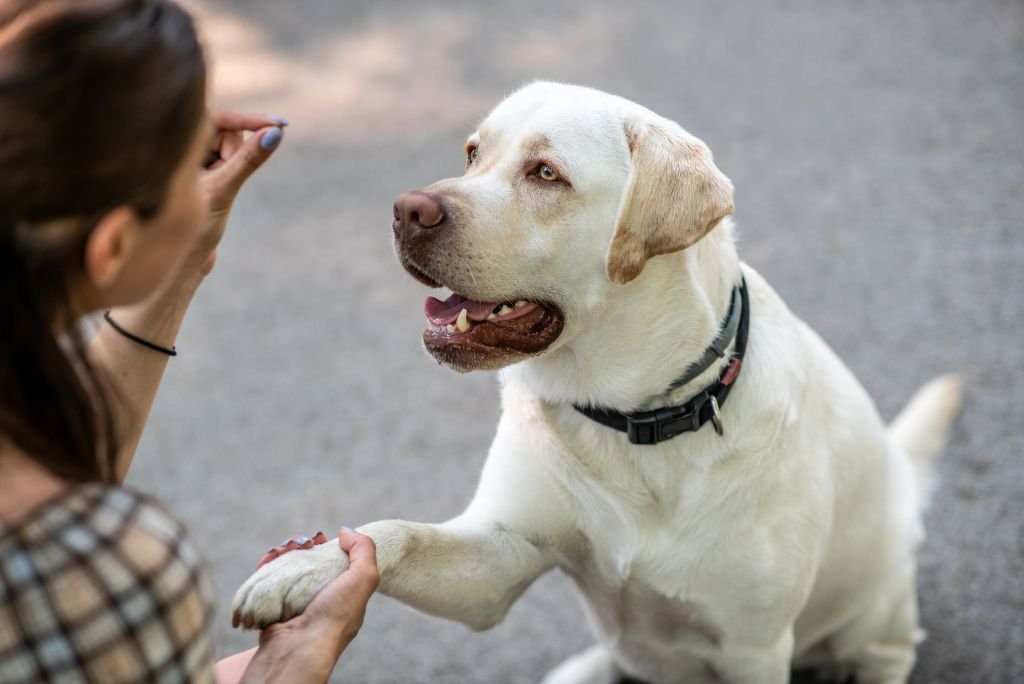
Dog Training Tips: How Using Treats Can Help Improve Your Pup’s Behavior
Share
Training your dog is one of the most rewarding parts of pet ownership, but it can also be challenging at times. Whether you're teaching basic commands like "sit" or "stay," or working through more complex behavior issues like excessive barking or chewing, positive reinforcement is a powerful and effective tool. And what's better than using tasty treats as a reward for good behavior? Here’s how you can use treats to help improve your dog’s behavior while strengthening your bond.
The Power of Positive Reinforcement
Positive reinforcement is a well-known and widely used method in dog training. Simply put, it means rewarding your dog for good behavior, which encourages them to repeat that behavior. When you use treats, you're providing an immediate, tangible reward that your dog can associate with the action they've just performed. This creates a positive learning experience and motivates them to keep practicing good behavior.
At Piper's Bark N Bites, we believe in using high-quality, single-ingredient treats to reward your dog during training sessions. Our treats are not only delicious (and motivating!), but they’re also packed with healthy ingredients that benefit your pup’s well-being. No need to worry about fillers or artificial ingredients — just wholesome, tasty rewards for your best friend!
Training Tips for Common Behavior Issues
Training is all about consistency, patience, and positive reinforcement. Here are a few common behavior issues and how you can use treats to address them:
1. Excessive Barking
Excessive barking can be frustrating, but with patience and consistency, it can be controlled. Start by teaching your dog the "quiet" command:
1. When your dog starts barking, wait for them to pause. Once they’re quiet, immediately reward them with a treat.
2. Repeat this process until your dog understands that being quiet earns a treat.
3. Consistency is key — don’t reward barking, only reward silence.
2. Jumping on People
Many dogs jump up when they’re excited to greet someone, but this behavior can be corrected with some training:
1. When your dog jumps on you or others, simply turn away and ignore them. The lack of attention will help them understand that jumping doesn’t get them the love they crave.
2. Once they stop jumping and have all four paws on the ground, reward them with a treat (chicken hearts are small and a great reward!).
3. Over time, your dog will associate calm behavior with attention and rewards.
3. Chewing on Furniture or Shoes
Chewing is a natural behavior, especially for puppies, but it’s important to redirect their chewing to appropriate items:
1. When you catch your dog chewing on something they shouldn’t, calmly take the item away and replace it with a chew toy or a treat.
2. Reward them when they start chewing on the appropriate item, reinforcing the behavior you want to see.
4. House Training
One of the most important training tasks is housebreaking. Positive reinforcement can make the process smoother and faster:
1. Take your dog outside frequently, especially after meals, naps, or playtime.
2. When your dog goes potty outside, immediately reward them with a treat (duck necks are great options!). This helps them associate going outside with something positive.
3. Don’t forget to praise them verbally with a happy “good job!” while giving them the treat.
5. Recall (Coming When Called)
Getting your dog to come when called is essential, especially for their safety. Here’s how to teach recall:
1. Start in a quiet, distraction-free area. Call your dog’s name and say “come” in an excited, happy tone.
2. When your dog approaches, reward them with a treat and plenty of praise.
3. Gradually increase the distance and add distractions as your dog becomes more reliable with their recall.
Why Piper’s Bark N Bites Are Perfect for Training
When it comes to choosing treats for training, it’s essential to select options that are both nutritious and irresistible to your dog. That’s where Piper’s Bark N Bites shines! Our treats are made with all-natural ingredients, without any harmful additives, preservatives or fillers, making them a guilt-free reward for your furry friend.
Tips for Successful Training Sessions
1. Keep Sessions Short and Sweet: Dogs, especially puppies, have short attention spans. Aim for 5-10 minute training sessions, multiple times a day, rather than one long session.
2. Be Consistent: Use the same commands and reward system every time so your dog can learn faster.
3. Use a High-Value Treat for Tougher Behaviors: If your dog is struggling with a command, consider using Piper’s Bark N Bites as a high-value treat — something especially yummy to really grab their attention and motivate them.
4. Gradually Phase Out Treats: As your dog becomes more consistent in their behavior, you can start offering fewer treats and rely more on praise. This helps to ensure that your dog doesn’t become overly dependent on treats for good behavior.
Using treats like Piper’s Bark N Bites is a fun and effective way to train your dog. Positive reinforcement builds trust and strengthens your bond while helping your dog learn important behaviors. Whether you’re addressing common behavior issues or teaching new commands, rewards are an essential part of any successful training plan.
With patience, consistency, and a few tasty treats, you’ll have your pup following commands and showing off their best behavior in no time!
